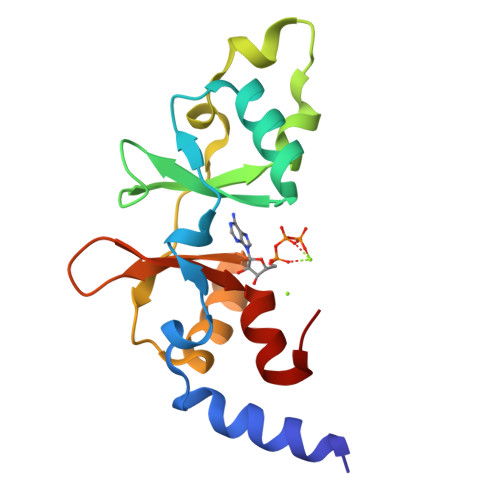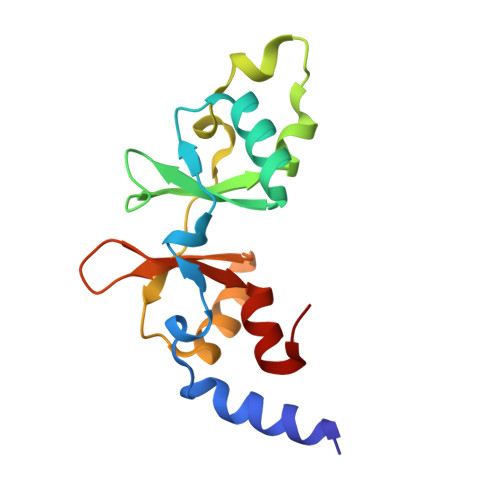Structural basis for the Mg 2+ recognition and regulation of the CorC Mg 2+ transporter.
Huang, Y., Jin, F., Funato, Y., Xu, Z., Zhu, W., Wang, J., Sun, M., Zhao, Y., Yu, Y., Miki, H., Hattori, M.(2021) Sci Adv 7
- PubMed: 33568487
- DOI: https://doi.org/10.1126/sciadv.abe6140
- Primary Citation of Related Structures:
7CFF, 7CFG, 7CFH, 7CFI - PubMed Abstract:
The CNNM/CorC family proteins are Mg 2+ transporters that are widely distributed in all domains of life. In bacteria, CorC has been implicated in the survival of pathogenic microorganisms. In humans, CNNM proteins are involved in various biological events, such as body absorption/reabsorption of Mg 2+ and genetic disorders. Here, we determined the crystal structure of the Mg 2+ -bound CorC TM domain dimer. Each protomer has a single Mg 2+ binding site with a fully dehydrated Mg 2+ ion. The residues at the Mg 2+ binding site are strictly conserved in both human CNNM2 and CNNM4, and many of these residues are associated with genetic diseases. Furthermore, we determined the structures of the CorC cytoplasmic region containing its regulatory ATP-binding domain. A combination of structural and functional analyses not only revealed the potential interface between the TM and cytoplasmic domains but also showed that ATP binding is important for the Mg 2+ export activity of CorC.
Organizational Affiliation:
State Key Laboratory of Genetic Engineering, Shanghai Key Laboratory of Bioactive Small Molecules, Collaborative Innovation Center of Genetics and Development, and Department of Physiology and Biophysics, School of Life Sciences, Fudan University, 2005 Songhu Road, Yangpu District, Shanghai 200438, China.




















